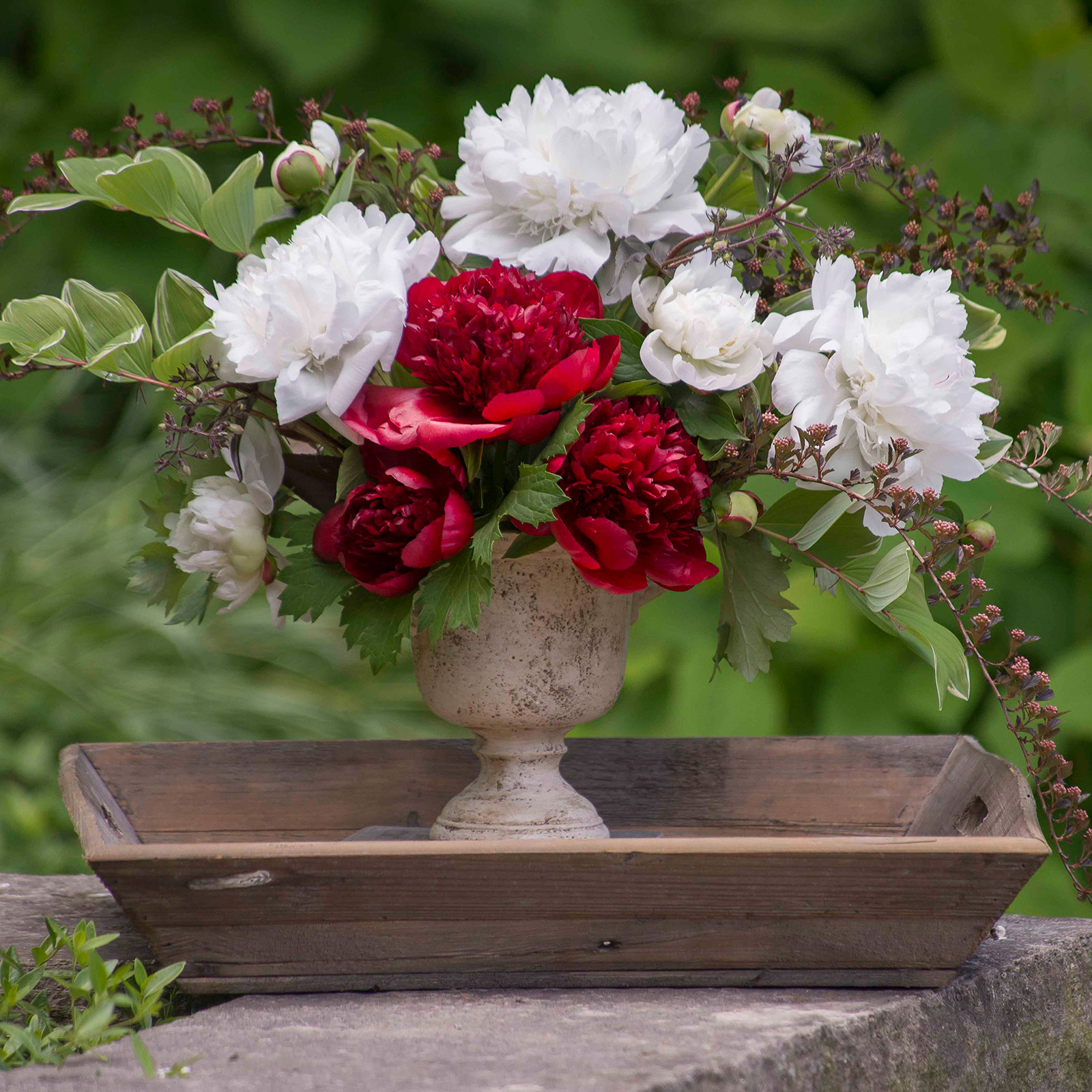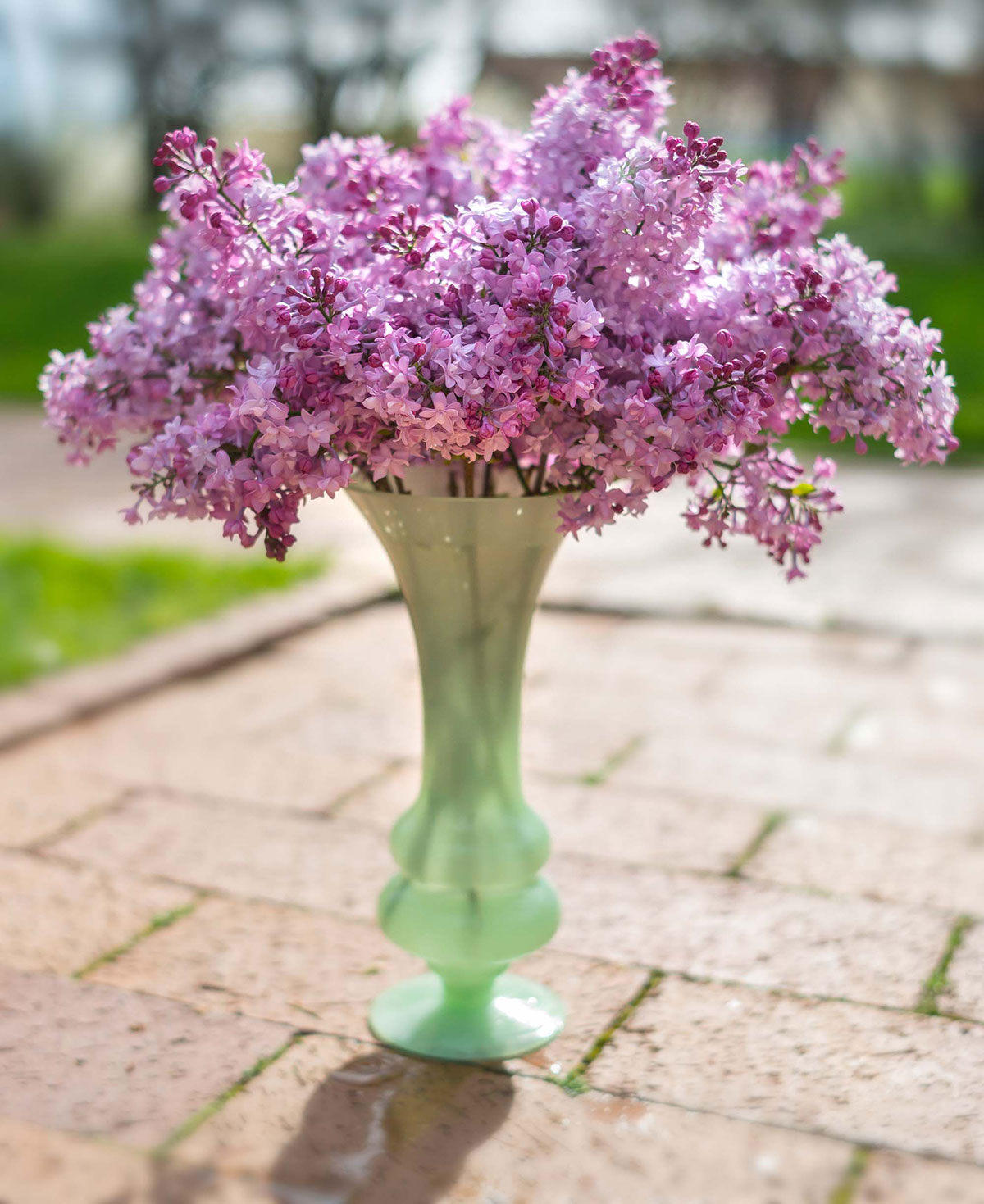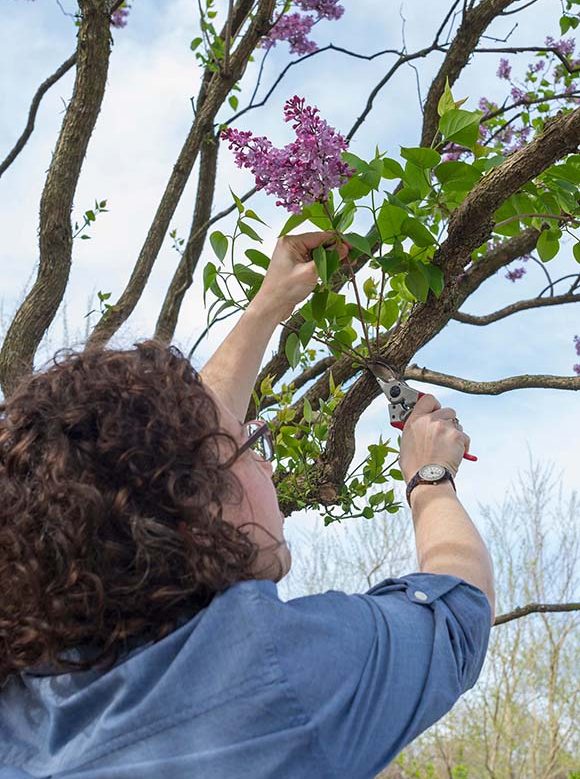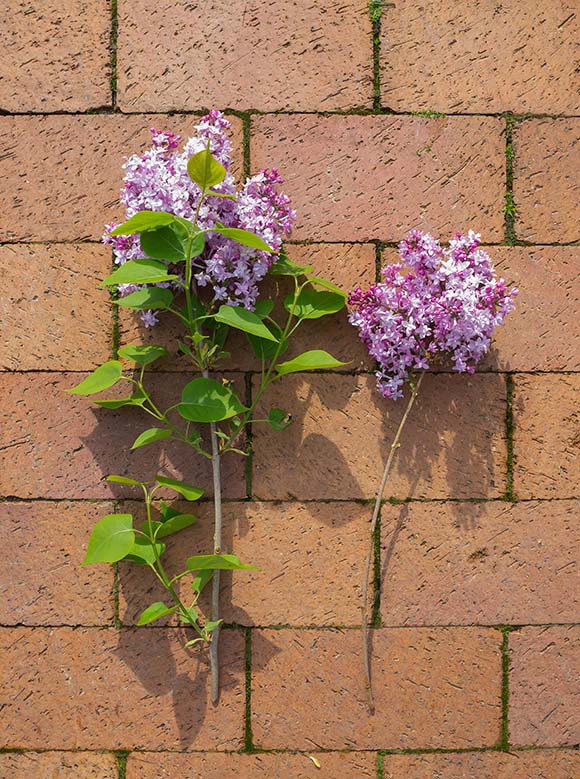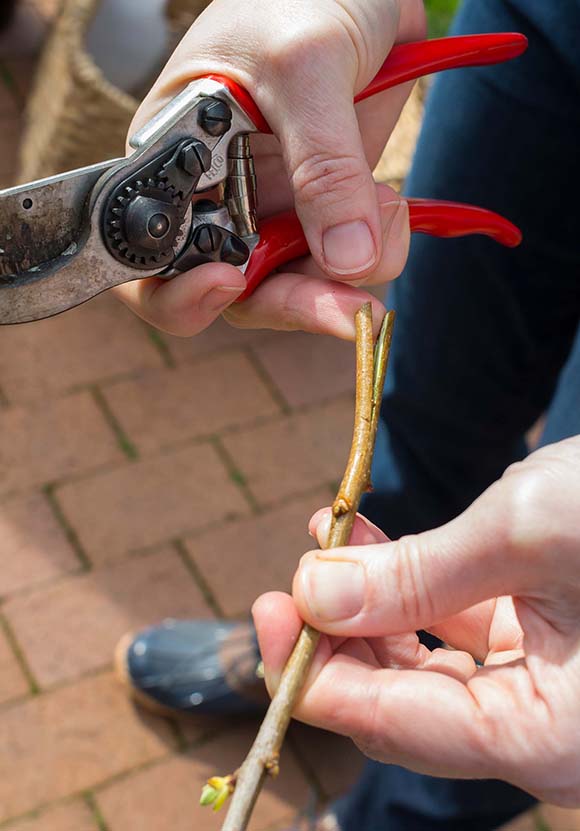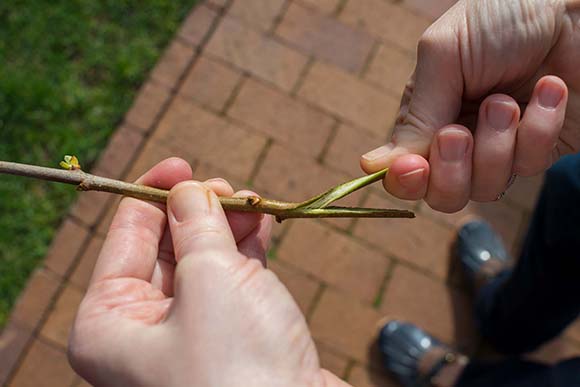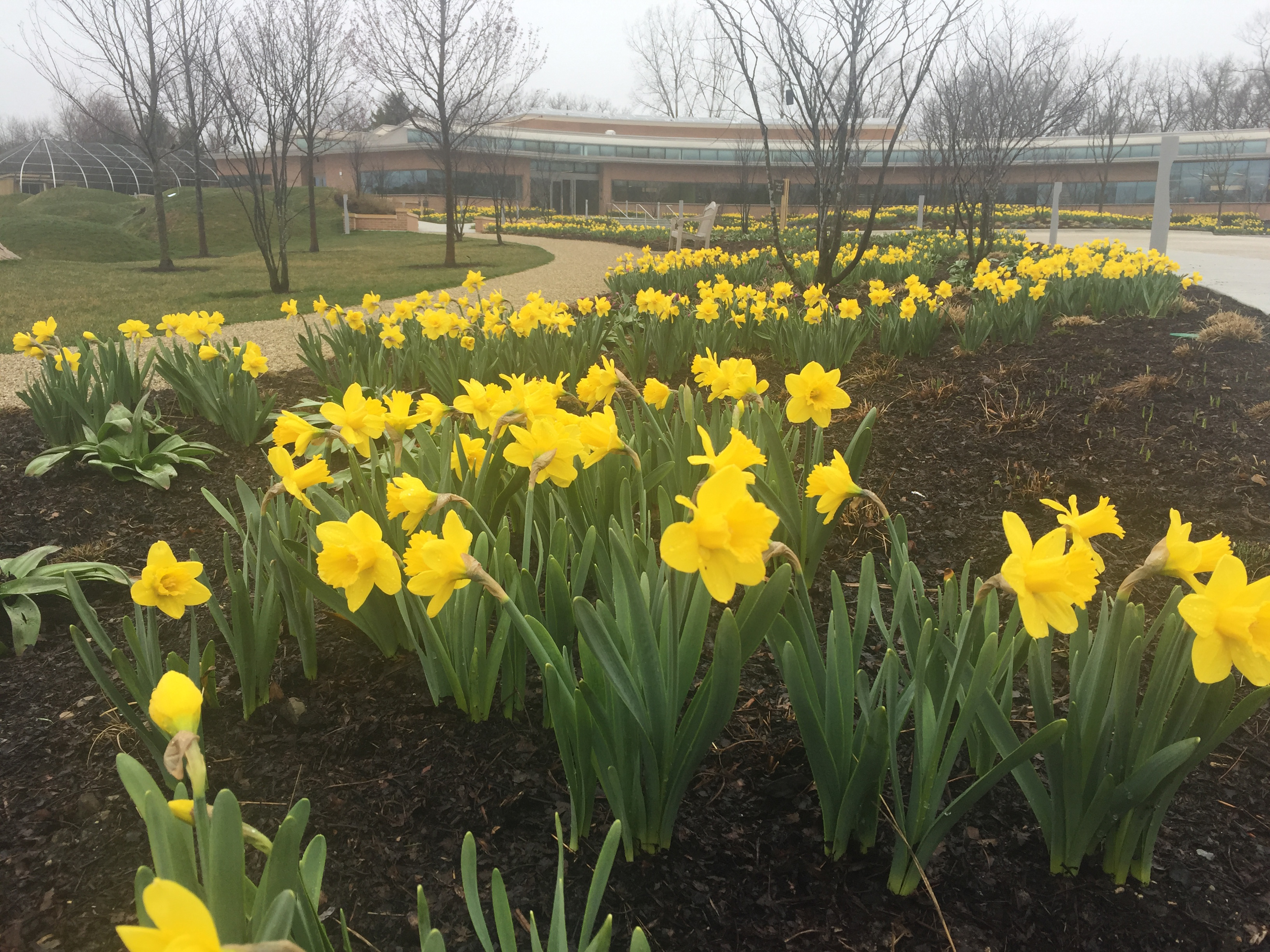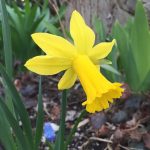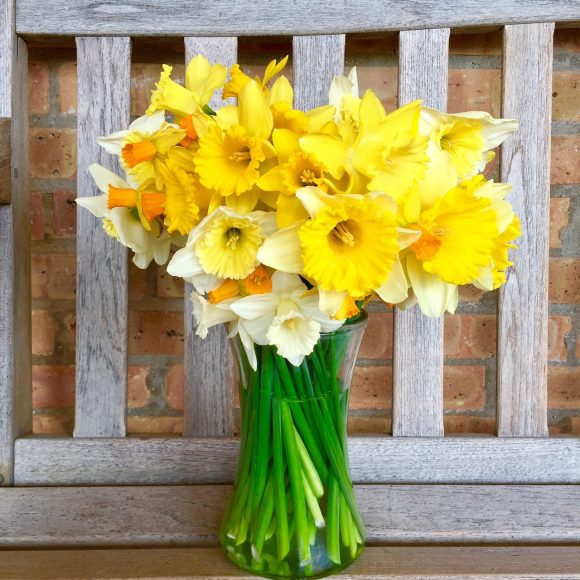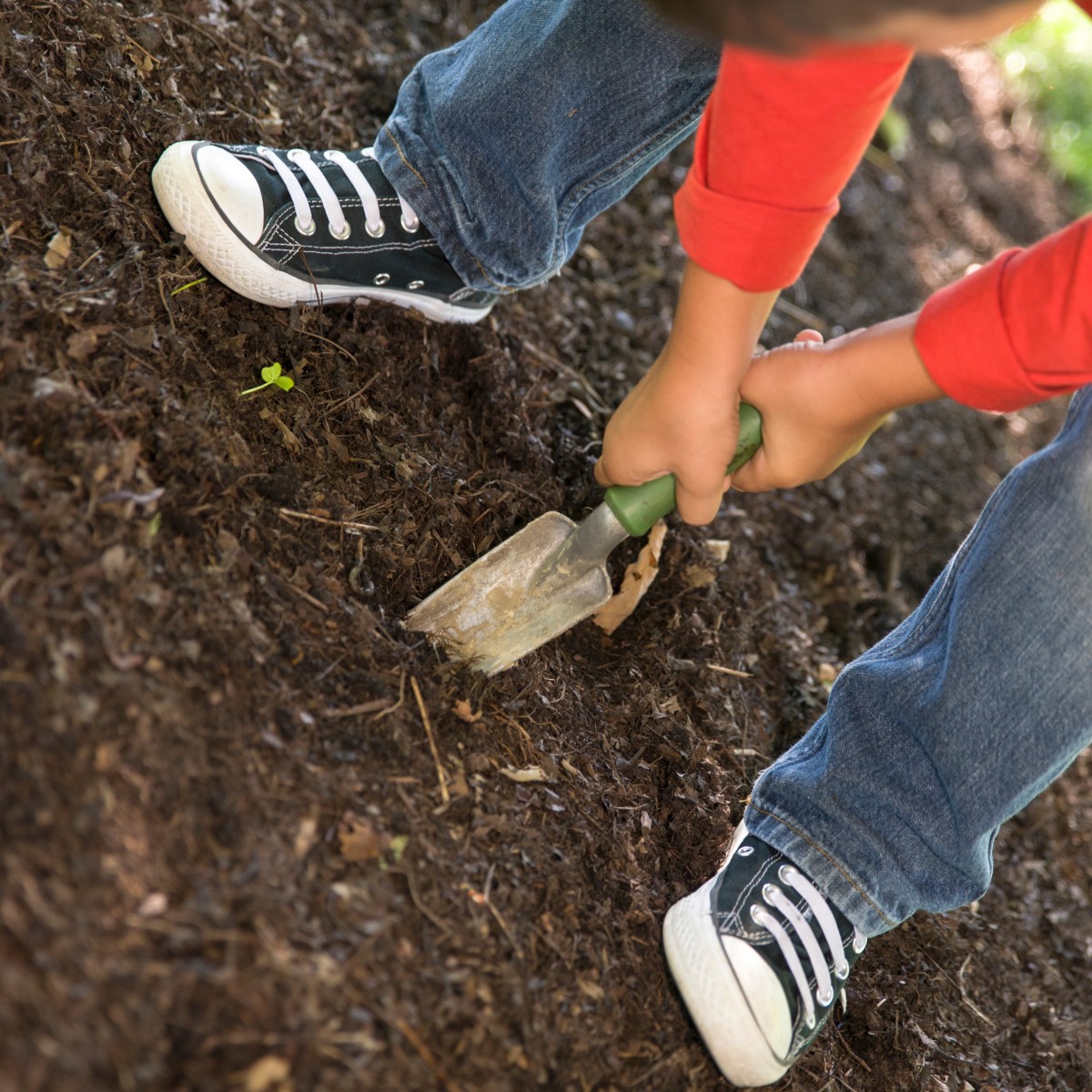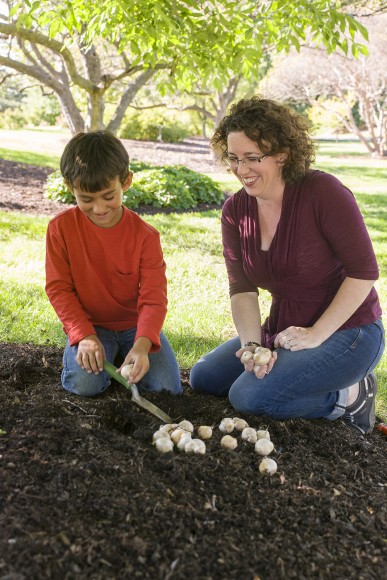Using peonies as a cut flower for floral design is easy, with a few tricks to preserve the health of your plants and flowers.
Peonies are the queen of the garden during their blooming season. From late spring through early summer, there is a beautiful abundance of color and shapes blooming, depending on the variety. Finding a variety that is also fragrant adds to the reward of growing this exquisite flower.
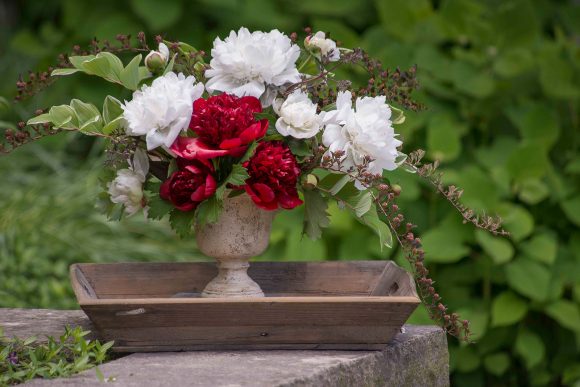
Here are few tips to extend the bloom of cut peonies indoors.
When cutting flowers from your plants, be sure to leave at least two sets of leaves on the stem so that the plant can continue to thrive.
You can select flowers that are as open as you like, but for the best vase life, select buds that have just begun to open and feel similar to a marshmallow.
Cut stems can be stored in the refrigerator for two to three weeks, but…no fruit—such as apples—can be in the refrigerator with your peonies. The ethylene gas emitted by ripening fruit will cause petals to drop, and buds to wilt and fail to open. I store peony stems so that I can use early- and mid-season blossoms together in the same arrangement. (This is also a good safety net if you are hoping to use peonies for an event, but Mother Nature decided to allow the peonies to bloom early.)
I have success in storing blooms two ways. One is by placing cut stems in a clean vase of cool water in the refrigerator, making sure that low foliage is not in the water. This can be challenging because the height of the stems don’t always fit in the fridge very well. The other method is to cut the stems and place them lying down in a plastic bag with a dry paper towel to absorb moisture. Both methods require daily checks to replace the water in the vase or the paper towels. If any of the blossoms in the plastic bag grow moldy, the infected flowers should be discarded, and the remaining flowers placed in a clean plastic bag. If the buds droop, don’t worry—often they can be revived in a vase of warm water.
Got ants? Ants love the sweet nectar of peonies as they begin to open. I dunk the blossom end of the stem in cool, clean water for 30 seconds to rid the ants from the flower before bringing the flowers into the house.
©2017 Chicago Botanic Garden and my.chicagobotanic.org

